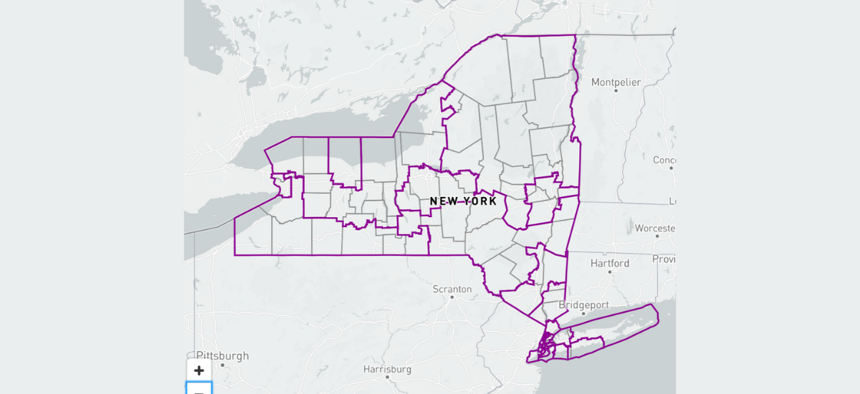The state Legislature wound down the 2024 edition of the redistricting saga Wednesday after Gov. Kathy Hochul signed a “message of necessity” allowing the Legislature to bypass bill aging requirements. That afternoon the state Assembly approved the Legislature’s proposed congressional maps in a 115-33 vote. The Senate approved the maps 45-17. Hochul later signed the maps into law.
Democrats in the state Legislature voted down the bipartisan Independent Redistricting Commission's map proposals on Monday. Last winter a state Court of Appeals decision forced the commission to prepare new congressional districts after a court-appointed special master created the lines used in the 2022 midterm elections. The court ruled that under state law, the commission – not the courts – should create the districts.
While Democrats ultimately didn’t approve the commission's lines – going as far as removing the 2% variance threshold for Legislature alterations – their edits were not substantial. There were only marginal gains and territorial shifts made in their version of the maps.
Assembly Speaker Carl Heastie told reporters Tuesday that the Legislature’s focus as they prepared their maps was connecting communities of interests that were divided in 2022.
Assembly Member Ken Zebrowski, a Democrat who leads that chamber’s redistricting efforts, mirrored those statements on the floor. He told Assembly Minority Leader Pro Tempore Andy Goodell that Orange County was split under the commission’s map, and under the Legislature’s it was whole. Similarly, that Rensselaer County was split into three districts whereas now it is two. Zebrowski added Black communities in the northeast Bronx were spread across three districts under the commission’s proposal and just two under the Legislature’s.
Zebrowski said that voters gave the chamber the “duty and authority to amend the maps if necessary.”
He also pushed back at assertions that the maps were another example of Democratic partisanship. “The Legislature is submitting this map, it’s really the small d–democratic, democracy – aspect of this that we should talk about.”
The votes in both chambers mostly went along party lines. One notable Republican who joined Democrats in approving the map was Assembly Minority Leader William Barclay. He told Reporters Tuesday that Republican leadership hadn’t signaled discontent over the maps – and didn’t plan to sue to change them.
While debating the map in the Assembly, much of the GOP’s pushback centered on how they arrived here. The bipartisan Independent Redistricting Commission approved the map 9-1, so some asked what the need was to make a new map.
Democratic leaders were pleased with the outcome. In particular, House Minority Leader Hakeem Jeffries thought the Legislature’s map improved on the commission’s proposal.
“The Independent Redistricting Commission took a modest step toward addressing many of the inequitable flaws of the special master’s map that were clearly inconsistent with the New York state constitution. However, the IRC’s work was incomplete,” Jeffries said in a statement. “Today, the state legislature has adopted a bipartisan congressional map that more meaningfully delivers the type of fair representation that the people of New York state deserve.”
In light of the past two years of lawsuits and delayed elections, the Legislature also passed a bill to limit “judge shopping” in the event of a legal challenge to the maps. Democratic lawmakers passed legislation that would limit redistricting lawsuits to courts in Albany, Erie, Manhattan and Albany counties. The previous lawsuit that resulted in New York’s current congressional boundaries was brought in steadily Republican Steuben County. The measure saw a failed attempt from Republican state lawmakers to add more counties to the list. A measure to include Bronx, Richmond, Saratoga and Monroe counties died in a party-line vote.
“It appears that this bill is doing the shopping for us,” quipped Republican Assembly Member Mary Beth Walsh.
In light of the delays, the Legislature also passed legislation that will push back the campaign petitioning start date to Feb. 29 rather than Feb. 27. Now that Hochul signed off on the maps, talk of redistricting will taper off in New York, at least for the next few years.


